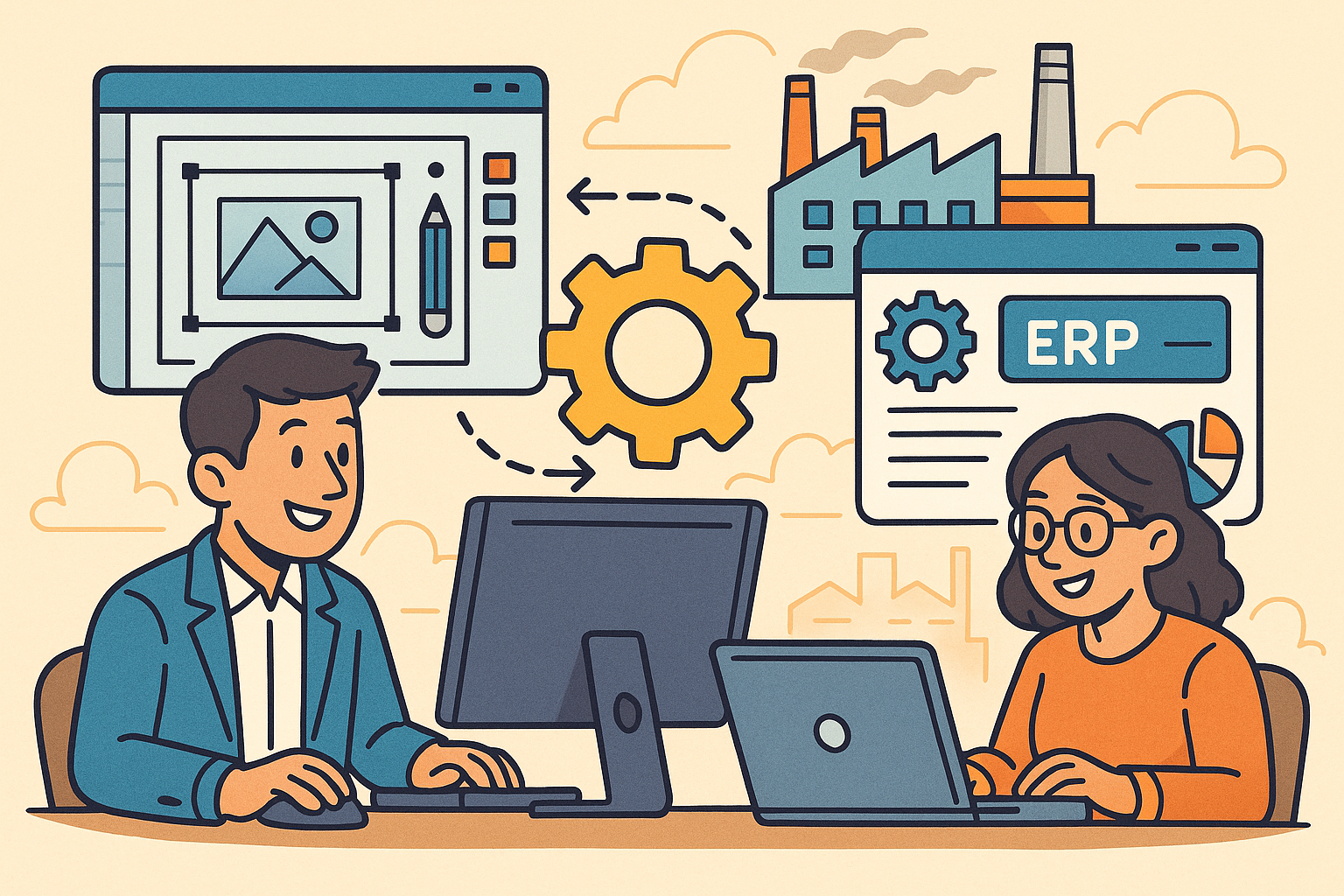Your Cart is Empty
Customer Testimonials
-
"Great customer service. The folks at Novedge were super helpful in navigating a somewhat complicated order including software upgrades and serial numbers in various stages of inactivity. They were friendly and helpful throughout the process.."
Ruben Ruckmark
"Quick & very helpful. We have been using Novedge for years and are very happy with their quick service when we need to make a purchase and excellent support resolving any issues."
Will Woodson
"Scott is the best. He reminds me about subscriptions dates, guides me in the correct direction for updates. He always responds promptly to me. He is literally the reason I continue to work with Novedge and will do so in the future."
Edward Mchugh
"Calvin Lok is “the man”. After my purchase of Sketchup 2021, he called me and provided step-by-step instructions to ease me through difficulties I was having with the setup of my new software."
Mike Borzage
Design Software History: Evolution and Impact of Design Software in Geothermal Energy Systems: From Manual Drafting to AI-Driven Optimization
March 31, 2025 5 min read


Introduction to Design Software for Geothermal Systems
Geothermal energy has emerged as a significant player in the renewable energy sector, offering a sustainable and reliable source of power derived from the Earth's internal heat. As the demand for clean energy solutions intensifies, geothermal systems are becoming increasingly important due to their ability to provide consistent energy output with a minimal environmental footprint. In this context, design software plays a crucial role in the planning, development, and optimization of geothermal systems. By leveraging advanced computational tools, engineers and designers can create more efficient and effective geothermal energy solutions that meet the growing global energy needs while mitigating environmental impacts. The integration of design software into geothermal projects not only enhances the precision and efficiency of system designs but also contributes significantly to the advancement of sustainable energy technologies.
Evolution of Geothermal Design Software
Early Beginnings in Geothermal Software
The initial exploration of geothermal energy relied heavily on traditional methods, with hand-drawn plans and rudimentary computational models forming the backbone of early system designs. Pioneers in the field, such as geologist G.E. Burmester, utilized basic tools to map geothermal resources and design extraction systems. Organizations like the United States Geological Survey (USGS) played a pivotal role in these early stages by providing essential geological data and resources. Despite the limitations of the technology at the time, these foundational efforts set the stage for future advancements. The lack of sophisticated software meant that engineers and scientists had to rely on manual calculations and estimations, which often led to inefficiencies and inaccuracies in system designs. Nonetheless, the dedication and innovation of these early contributors laid the groundwork for the eventual integration of more advanced computational tools in geothermal energy projects.
The Transition to Computer-Aided Design (CAD)
The advent of computer technology brought about a significant shift in the geothermal industry with the introduction of Computer-Aided Design (CAD). The transition from manual drafting to CAD marked a turning point, enabling designers to create more precise and complex geothermal system models. Early commercial CAD software, such as AutoCAD developed by Autodesk, revolutionized the way engineers approached geothermal design by providing tools that enhanced accuracy and allowed for more detailed simulations. This shift not only improved the efficiency of the design process but also reduced the margin of error associated with manual calculations. Companies like ThermoSystems Inc. were among the early adopters of CAD in geothermal projects, leveraging the technology to optimize system layouts and improve overall performance. The impact of CAD on the geothermal industry was profound, setting new standards for design precision and paving the way for further technological innovations.
Advances in Geothermal Design Software
Integration of Specialized Geothermal Tools
As the geothermal industry continued to grow, there was a need for more specialized tools that could address the unique challenges associated with geothermal system design. This led to the incorporation of emerging geothermal modeling tools into mainstream design software. Advanced features such as thermal analysis, site simulation, and resource assessment became integral components of these software solutions. Companies like Autodesk and Bentley Systems developed sophisticated tools tailored specifically for geothermal applications. For instance, Autodesk's Revit integrated with Green Building Studio allowed for comprehensive energy analysis, while Bentley's OpenFlows provided advanced modeling capabilities for underground fluid dynamics. These specialized tools enabled engineers to conduct detailed simulations, optimize system performance, and assess environmental impacts more effectively. The integration of these functionalities into design software significantly enhanced the ability to create more efficient and sustainable geothermal systems.
The Role of Computational Fluid Dynamics (CFD) and Finite Element Analysis (FEA)
The incorporation of Computational Fluid Dynamics (CFD) and Finite Element Analysis (FEA) into design software marked another milestone in the evolution of geothermal system design. CFD allowed engineers to simulate and analyze fluid flow within geothermal reservoirs and piping systems, providing valuable insights into heat transfer processes and system efficiency. FEA enabled the examination of structural components under various stress conditions, ensuring the integrity and safety of geothermal installations. Software platforms like ANSYS and COMSOL Multiphysics became essential tools for engineers, offering robust simulation environments for modeling complex geothermal processes. By utilizing CFD and FEA, designers could optimize system components, predict performance under different conditions, and reduce the risks associated with system deployment. These advanced analytical capabilities contributed to more reliable and efficient geothermal energy production.
Future Trends and Implications
Emerging Technologies in Geothermal Design
The future of geothermal design software is poised to be shaped by emerging technologies such as Artificial Intelligence (AI), Machine Learning (ML), Virtual Reality (VR), and Augmented Reality (AR). The integration of AI and ML into geothermal design tools promises to enhance the simulation and optimization of geothermal systems. These technologies can analyze vast amounts of data to identify patterns and make predictive decisions, leading to more efficient system designs and operations. Companies are exploring the use of AI-driven algorithms to optimize drilling locations, predict resource availability, and enhance energy extraction methods. Additionally, VR and AR technologies are being developed to provide immersive visualization and planning capabilities for geothermal sites. Engineers and stakeholders can virtually explore geothermal installations, assess spatial relationships, and make informed decisions during the planning and design phases. These advancements are expected to significantly impact the way geothermal projects are conceptualized and implemented in the future.
Sustainability and Efficiency in Geothermal Design
Modern design software is at the forefront of pushing the boundaries of efficiency, sustainability, and cost-effectiveness in geothermal energy production. Advances in software capabilities allow for more accurate modeling of geothermal reservoirs, leading to better resource management and minimal environmental impact. Tools that enable lifecycle analysis and environmental impact assessments are becoming integral in ensuring the sustainability of geothermal projects. Moreover, ongoing research is focusing on enhancing software algorithms to improve system efficiency and reduce operational costs. By incorporating real-time data analysis and monitoring, software solutions can facilitate proactive maintenance and optimization strategies. The continuous evolution of design software is essential in addressing the growing environmental and technological demands, ensuring that geothermal energy remains a viable and significant component of the global energy portfolio.
Conclusion
The transformative impact of design software on the geothermal energy sector is evident through the significant advancements in system efficiency, accuracy, and sustainability. From the early days of hand-drawn plans to the sophisticated, AI-integrated tools of today, design software has been central to the evolution of geothermal systems. As environmental concerns and the demand for renewable energy sources intensify, the continuous development of geothermal design tools remains critical. The role of design software extends beyond mere planning; it is a driving force in advancing geothermal systems as part of a sustainable and diversified energy portfolio. By embracing technological innovations, the geothermal industry can continue to enhance its contributions to global energy solutions, ensuring a cleaner and more sustainable future.
Also in Design News

Revolutionizing Business: Integrating Design Software with ERP Systems for Seamless Innovation and Efficiency
August 27, 2025 10 min read
Read More
Cinema 4D Tip: Optimizing Polygon Count in Cinema 4D for Enhanced Performance and Visual Fidelity
August 27, 2025 3 min read
Read MoreSubscribe
Sign up to get the latest on sales, new releases and more …



